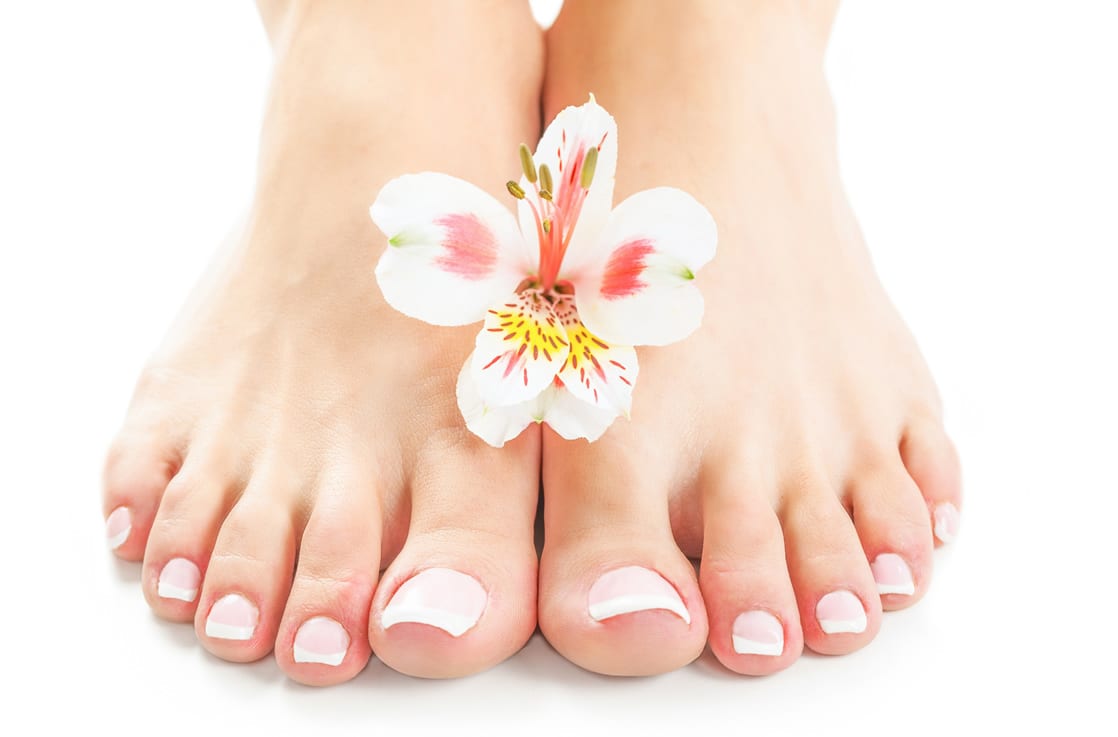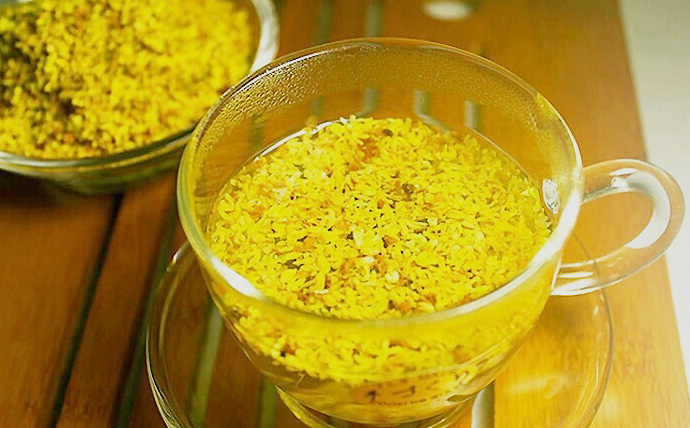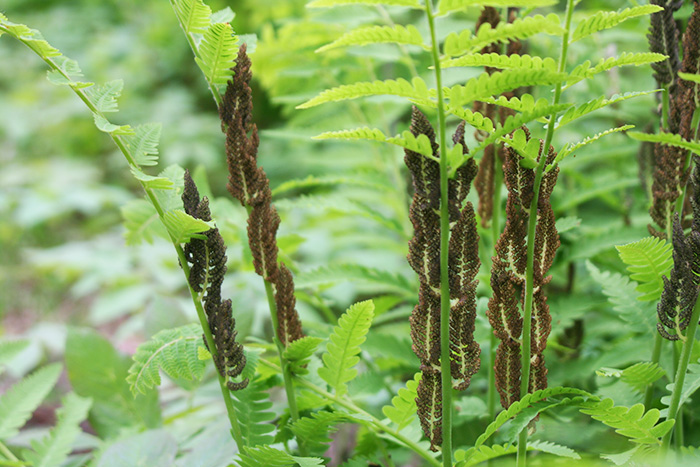If you don’t have ingrown fingernails or toenails, then you should consider yourself lucky. These tiny things are evil- they bring great discomfort and pain to whoever has them. It doesn’t matter if they’re on your hands or feet. The bottom line is they’re painful, period.
In the medical world, ingrown fingernails are called Onychocryptosis which occurs when one or more of the edges of your fingernails grow downwards and into the skin around it. It curls downward as it grows, causing the surrounding skin to grow over it. Your nails on both hands and feet can become ingrown.
Here’s a list of factors that cause ingrown fingernails:
The most common cause of ingrown fingernails is when they are not trimmed properly.
Other causes are:
- Heredity. Believe it or not, this causes ingrown nails.
- Nail injury or on the skin surrounding it. This usually happens to athletes.
- If your nails are too large and they curve naturally.
- Shoes that are too tight.
- As mentioned earlier, nails that are not trimmed properly.
No matter what caused fingernails to become ingrown, it will still be infected if you don’t treat it at the soonest possible time.
Remedies for Ingrown Nails
One of the obvious signs that you have ingrown nails is pain, swelling, and redness. If you notice these signs, check if you have an ingrown nail. In some cases, a pus drainage forms which indicates that your nails are already infected. When this happens, it’s best to ask for treatment form your doctor. However, if there’s no infection, you can opt for natural treatments that you can do at home.
Here are some of the remedies:
Ingrown Nail Remedy Number One: Potassium Permanganate Soak
Potassium permanganate is a salt compound (KMn04) that functions as a natural disinfectant. You can use it to sanitize food and oxidize water. Potassium permanganate can also be used as an antiseptic when treating ingrown nails. When you dilute potassium permanganate solutions, you can use it to treat fungal and ulcer infections like Athelete’s Foot, and other foot problems like canker soles.
You will need:
- A gallon of water (this is equivalent to sixteen cups or four litres)
- A quarter tablespoon or 1.5 grams of potassium permanganate
Here’s how:
- Put the water and potassium permanganate in a basin. Stir thoroughly.
- Put your hands or feet in the mixture for fifteen to twenty minutes.
- Use a soft towel to dry your hands or feet.
- Do this remedy two times a day for two to three weeks.
This solution gets rid of fungal infections on your skin.
Caution: This remedy may cause your hands or feet (whichever will be soaked in the potassium permanganate solution) to turn brown for a couple of weeks. No need to worry because the discoloration will eventually go away.
Ingrown Nail Remedy Number Two: Baby Oil
Baby oil or mineral oil softens the skin which is exactly what you need to treat ingrown nails. When the paining nail is soft, you can trim it easily.
You will need:
- Nail cutter
- A few drops of mineral oil or baby oil
Here’s how:
- Apply some baby oil and massage it on your ingrown nail for a couple of minutes.
- Once you notice that the skin surrounding the nail has become soft, use the nail cutter to trim.
- Make sure you have sufficient light to see the nail clearly and to keep from cutting your skin.
- If there’s not enough light, keep applying baby oil on the area and try other methods to keep the skin and the ingrown nail soft.
Ingrown Nail Remedy Number Three: Warm Water
One of the known treatments for skin inflammation is warm water. No need for special mixtures, just plain warm water.
You will need:
- A soft towel
- Warm water
Here’s how:
- Fill an empty basin with warm water.
- Soak your toes or fingers with ingrown nails in the warm water for fifteen to twenty minutes.
- Take out your hands or feet and then dry it with a soft towel.
- It’s important to take keep your hands and feet dry when they’re not being treated for ingrown nails. Moist or wet fingers allow fungi or bacterial growth which may lead to an infection.
- Repeat the procedure three to four times daily.
If you notice that the surrounding skin and ingrown nail has already become soft, use the cutter to trim the nail. Again, do this only if you have sufficient light. Be cautious while trimming, you wouldn’t want to do more harm by pushing the ingrown nail while cutting.
Ingrown Nail Remedy Number Four: Vinegar Water Solution
Vinegar is commonly used in treating various types of infection. If you think your ingrown nail is or might be infected, apply apple cider vinegar or plain vinegar to treat it immediately.
You will need:
- Four parts water
- One part plain vinegar or apple cider vinegar
Here’s how:
- Mix vinegar and water in a bowl or basin.
- Soak the toe or finger with the ingrown nail.
- Keep your hands or feet in the vinegar solution for fifteen to twenty minutes.
- Use a soft towel to dry the affected part.
- Do this remedy two to three times a day.
Ingrown Nail Remedy Number Five: Cotton Ball
Research shows that our nails grow an average of 2-3 mm monthly. As they grow, you can lead them to the right direction and keep them from curling deep into the skin around the nail. You can use a clean cotton ball to guide your nails.
You will need:
- Tweezers
- A clean cotton ball (big or small)
Here’s how:
- Take a small part of the clean cotton ball.
- Roll it, and then place it below the edge of your ingrown nail.
- Use tweezers if necessary. Be cautious and make sure you don’t push the nail.
- It’s best to do this remedy after soaking the affected area in warm water because you’re sure that both nails and skin are flexible and soft. It won’t be painful to lift the nail, compared to when the skin is dry and rigid.
- By doing this simple remedy, you’re guiding the ingrown nail to grow over the skin and not curl downwards.
- Repeat this remedy for a couple of days until your certain that your nail is no longer growing into the skin surrounding it.
- Don’t leave the cotton in that location for more than 24 hours. This might lead to bacterial or fungal infections.
Ingrown Nail Remedy Number Six: Hydrogen Peroxide
One of the natural disinfectants that is commonly used in getting rid of bacterial and fungal infections is hydrogen peroxide. It’s made up of water (H2O) and a molecule of oxygen (H2O2). Hydrogen peroxide, which can be seen in trace amounts of snow and rain, is used and produced by our immune system to manage viruses and bacteria in our bodies. In the world of medicine, it’s a disinfectant that’s applied topically.
One must be cautious when using hydrogen peroxide because it’s toxic and can lead to death when swallowed by accident. Dilute 35% food grade hydrogen peroxide in 11 ounces or six teaspoons of water so you before using. You can use this 3% hydrogen peroxide solution to treat ingrown nails.
You will need:
- Half a bucket of water
- A cup of hydrogen peroxide
Here’s how:
- Mix water and hydrogen peroxide.
- Dip the affected part in the solution for fifteen to twenty minutes.
- The solution will soften the skin surrounding the ingrown nail, alleviate pain, and treat the infection.
- Use a soft towel to dry the affected area.
Ingrown Nail Remedy Number Seven: Epsom Salt Soak
If the pain caused by the ingrown nail on your toe or finger becomes too difficult to bear, use Epsom salt. It will alleviate the pain and tenderness while treating the infection.
You will need:
- One to two quarts or four to eight cups of warm water
- Two to four tablespoons of Epsom salt (two tablespoons per quart of water)
Here’s how:
- Pour the warm water in a clean bowl.
- Add the Epsom salt.
- Soak your hand or foot with the ingrown nail for twenty to twenty-five minutes.
- Use a soft towel to dry the affected area.
- Do this remedy two to four times daily.
Ingrown Nail Remedy Number Eight: Lemon
Lemon is acidic and that makes it effective in treating infections. If you have no creams or gels at hand, just slice a lemon and use it to treat your ingrown nail.
You will need:
- A bandage
- A thin lemon wedge
Here’s how:
- · Place the lemon wedge over the ingrown nail.
- · Get the bandage and wrap it around the lemon wedge to keep it in place. You may use a band-aid of there’s no bandage available.
- · Leave it for twenty-four hours.
- This will keep the nail from curling into the surrounding skin while treating the infection.
Ingrown Nail Remedy Number Nine: Tea Tree Oil
Tea tree oil, like other essential oils, comes in handy when there’s a high risk of infection. This is because tea tree oil contains anti-fungal and antibacterial properties that can help alleviate pain caused by the infection.
There are two types of tea tree oil remedy for ingrown nails:
Tea Tree Oil- Warm Water:
You will need:
- A few drops of tea tree oil
- Warm water
Here’s how:
- Fill a basin with warm water.
- Mix in two to four drops of tea tree oil.
- Soak your hands or feet for fifteen to twenty minutes.
- Use a soft towel to dry the affected area.
- Do this remedy two to three times daily.
Tea Tree Oil-Olive Oil
You will need:
- A tablespoon of olive oil
- A few drops of tea tree oil
Here’s how:
- Mix the tea tree oil and olive oil.
- Apply the oil on the ingrown nail.
- Massage gently.
- You will feel relieved once the skin softens and absorbs the oil.
Ingrown Nail Remedy Number Ten: Essential Oils
Essentials oils help soothe the pain and inflammation caused by ingrown nails. Some essentials oils contain disinfectant and antiseptic properties that help treat fungal and bacterial infection. Using these oils in their pure form or mixing them with other oils can alleviate the discomfort and pain.
For this remedy, you can use any of the following:
- Tea tree oil: it has anti-fungal and antibacterial properties.
- Melaleuca oil: it gives relief from pain and it contains anti-inflammatory and antiseptic properties.
- Rosemary oil: it has disinfectant, anti-fungal, anti-inflammatory, and antibacterial properties.
- Lavender oil: its soothing properties can help provide relief from skin irritation.
- Clove oil: it contains numbing, disinfecting, and pain relieving properties that’s why it’s commonly used in treating different types of skin infections.
You will need:
- Pick one or more essential oils from the list above.
Here’s how:
- If you’re only using one essential oil, get one drop and apply it on your ingrown nail. If you find that the essential oil is too strong, you may mix it with some olive oil before applying.
- If you’re using more than one essential oil, get one drop each and then apply the mixed oil on your ingrown nail.
- Wrap the affected area with a bandage or band-aid.
- Do this remedy two to four times a day.
- The redness, swelling, and pain will subside within two to four days.
- If you still don’t feel any relief after four days, visit your doctor.
Ingrown Nail Remedy Number Eleven: Castor Oil
Castor oil contains properties that can alleviate cramps, spasms, and muscle tension. Applying castor oil on affected areas improves blood circulation, disperses congestion, and allows the muscles to relax. It also releases toxicity, tension, and softens the area.
You will need:
- Bandage or band-aid
- Castor oil
- Baking soda
Here’s how:
- Blend a small amount of castor oil and baking soda until it forms a gum-like paste.
- Gently apply the paste on the affected finger or toe.
- Cover the area with a bandage or band-aid.
- Remove the cover after a couple of hours.
- If your skin gets irritated, stop immediately.
- If your skin reacts positively to the paste then do this daily to treat the ingrown nail.
How to Handle Ingrown Nails:
- If, after using the home remedies listed above, the ingrown nail shows zero signs of improvement, then it’s time to visit your doctor. In some cases, it’s difficult to distinguish the symptoms between bacterial or fungal infections and ingrown nails because the signs are very similar (redness and swelling).
- If you’re a diabetic with ingrown nails, it’s best if you avoid doing the home remedies. Ask your doctor for proper medical treatment.
- If have poor blood circulation in your feet or if you’re suffering from other types of foot disease, avoid doing the remedies. Ask your doctor for proper medical treatment.
How to Avoid Ingrown Nails:
- When trimming your nails, cut straight. The curve makes them prone to ingrown.
- Practice proper hygiene and make sure that your nails are always clean.
- Don’t cut your nails too short.
- If you notice that the edges of your nails are sharp, file them gently. Avoid filing too hard, this will damage your nails.
- Avoid rounding your nails since this will increase the chances of them curling deep into the skin.
- Do not tear or rip off the edge of your nails. This will lead the nails to grow deep into the surrounding skin.
- Use nail cutters or clippers instead of scissors when trimming your nails.
Proper Hand and Foot Care
- Go for open toe shoes or sandals. This gives your toes enough breathing space.
- Keep from trimming the corners of your nails.
- Avoid ingrown toenails by wearing shoes that fit properly. When you wear shoes that are too tight, you increase the chances of developing ingrown toenails.
- As we mentioned earlier, practice proper hygiene and keep your nails clean!
How to Remove Ingrown Nails:
Ingrown toenails bring great discomfort and pain to a lot of people. It’s hard to walk and it stings every time the ingrown nail touches the space inside the shoes. If the ingrown nails already caught a bacterial infection, avoid doing home remedies and see a podiatrist immediately.
Here are some more ways to get rid of ingrown nails:
- Give the affected hand or foot a warm salt water bath. If there’s one thing you should do once you discover that you have an ingrown nail, it’s this. Salt disinfects your ingrown nail while the warm water softens your skin.
Fill a basin with warm water and add a teaspoon of salt. Soak the hand or foot with the ingrown nail in the warm salt water bath for fifteen to twenty minutes. Repeat the process two to three times daily.
This will help you relax as it alleviates the pain and soothes the swelling. Note that you must dry your foot with a soft towel to prevent the growth of fungus and bacteria.
- You can increase the effectivity of the warm water bath by adding some natural healers such as Epsom salt, fresh lemon juice, essential oils (tea tree or lavender oil) and vinegar. These natural ingredients contain antiseptic, disinfectant, and antibacterial properties that can treat bacterial infection and speed up the healing process of your ingrown nail.
- Ingrown nails hurt because they are growing towards the wrong direction, which is deep into the skin surrounding it when nails are supposed to grow against or over the skin. To keep this from happening, guide your nail as it grows.
It’s best to do this after soaking your hand or foot in warm water because that’s when the skin is at its softest. Gently lift the skin near the ingrown nail by using your hand or a nail file. Be very careful. Do not do this when the skin is dry and rough because that will only cause you more pain.
- Now that you’ve separated the ingrown nail and the skin, push in a small piece of clean cotton inside the gap. This will keep the skin and the ingrown nail from coming in contact with each other. Remember to apply some antiseptic lotion before using the cotton.
- Use a bandage or band-aid to cover the ingrown nail to secure the stuffed piece of cotton.
- Help your ingrown nail heal by using comfortable footwear. When the shoes are too tight, the ingrown nail finds it difficult to grow in the right direction. As much as possible, use sandals or loose shoes to give your toe enough breathing space since it’s wrapped in a bandage.
- Remove or replace the cotton regularly. It’s dangerous to leave the moist cotton in the gap between the skin and ingrown nail for hours. This might cause bacterial infection. It’s best if you can replace it with a new one every two to three hours but if that’s not possible, then try to change it two to three times a day.
- Trim your nails properly. Cut your nails straight to avoid ingrown nails.
- Use special cutters to trim your toenails. We mentioned earlier that sharp edges or nails that are rounded off may lead to ingrown toenails. You can keep this from happening by using special cutters that are designed to trim your toenails. Normal cutters or scissors are not big enough to trim the nails properly.
- Make it a habit to trim your nails regularly. As much as possible, cut your fingernails once a week and your toenails once every two to three weeks. Normally, the nails on our toes grow slower than the nails on our fingers but some people need to have their toenails trimmed weekly. If you’re one of them, trim your nails whenever necessary. Just keep your nails from growing long enough to become ingrown.
- It’s quite tempting, but as much as possible, avoid getting manicure and pedicure treatments from the salon when you have an ingrown nail. Tools from the salon or parlor are not sanitized and are used on EVERY SINGLE CLIENT who avails of their service so this increases the risk of infection.








